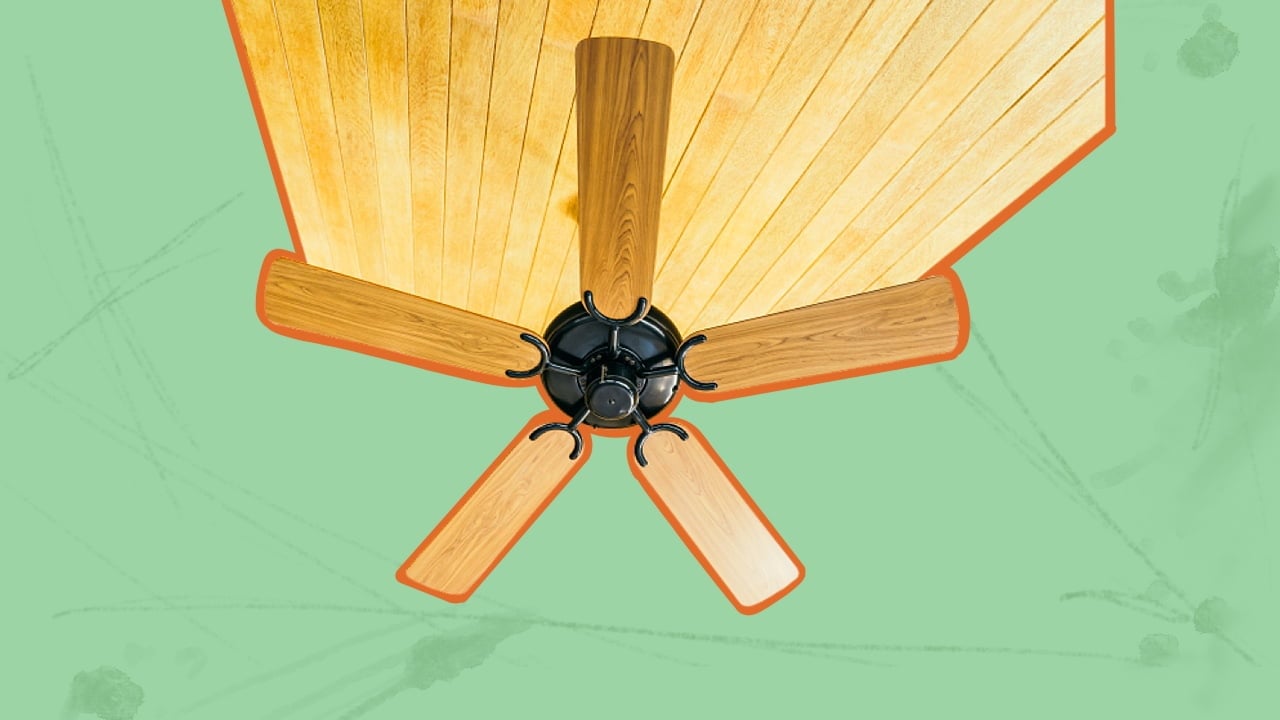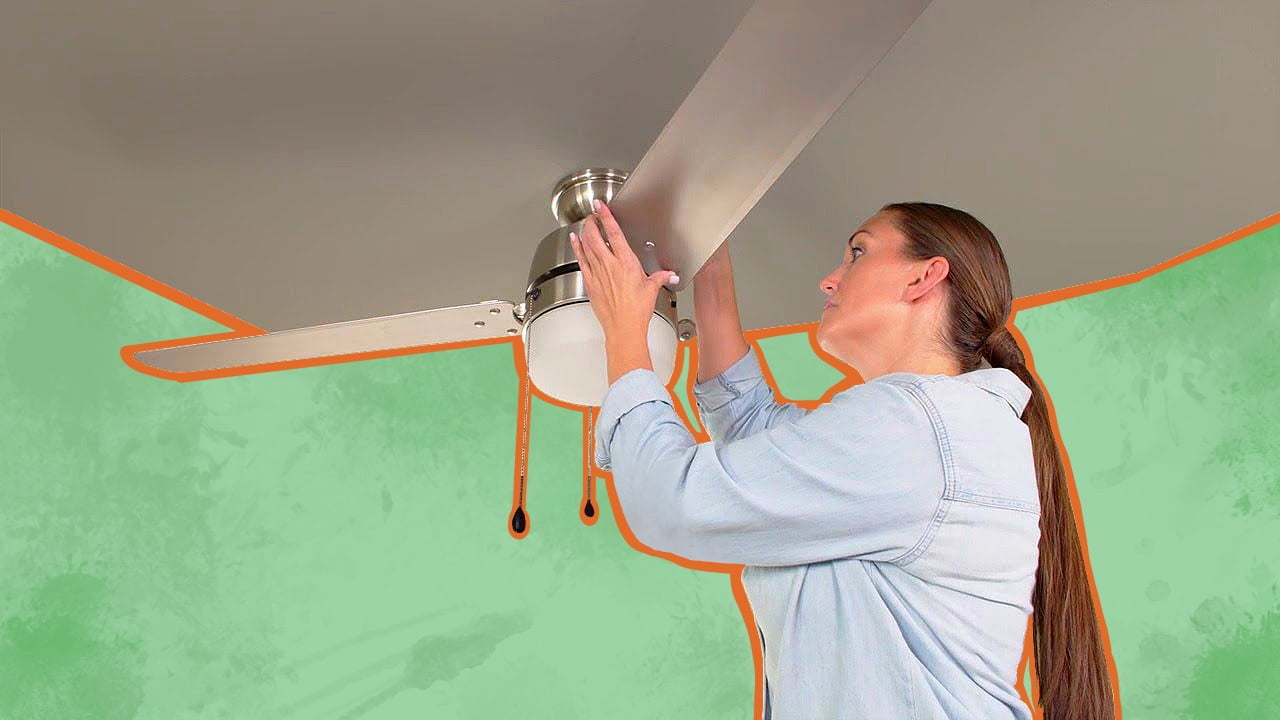A noisy ceiling fan is a common issue in most households. However, it’s very easy to determine the root cause by carefully identifying the type of noise. Be it rattling, clicking, grinding, or humming noise, they can be quickly resolved by tightening a few loose parts and checking the fan motor.

Using ceiling fans on hot and humid days instead of an air conditioning system is a great way to save energy and money. Most ceiling fans run on minimal electricity and make almost no noise - you may not even notice the fan running if it’s in good condition!
However, a noisy ceiling fan can be really annoying since it can disrupt your sleep and even make you lose focus while working. That’s why it’s important to purchase a ceiling fan that makes little to no noise. But if you have an old fan that’s having this issue, the solution is usually as simple as tightening a loose screw.
In this article, I will walk you through some of the most common noises ceiling fans make and how to determine their ideal troubleshooting method. Read on!
Types Of Ceiling Fan Noises

A specific noise coming from the ceiling fan can help you determine what’s wrong with it. Pay close attention and listen to the noise carefully to identify what kind of noise it is making from the list below:
1. Humming Noise
If your ceiling fan is making a humming noise, there might be some issues related to the light switch or remote control, if any. This is a common issue, especially if it is set on a dimmer switch or low fan speed. If the issue persists even after increasing the speed and checking the wall switch, consult an HVAC technician.
2. Clicking Noise
A clicking sound may occur if one or two of the ceiling fan blades have come loose. This issue has an easy fix - you need to simply tighten the blade screws, which are typically located near the fan motor. If there’s a built-in light fixture on the ceiling fan, check its mounting screws since a loose ceiling fan light can cause accidents. Often, a loose light fixture can also cause a clicking noise.
3. Rattling Noise
Ceiling fans usually make a rattling noise if loose screws have fallen into the wrong place. This is especially common if there’s an electric light fixture attached to the fan motor - so look for any loose screws that have fallen into the glass box.
Rattling sounds may also be due to an improperly installed bracket. In this case, you must ensure the fan bearings are tightened. But if it continues to make a rattling noise, consider replacing the ceiling fan brace.
4. Grinding Noise
A grinding or scraping noise may sound a bit alarming, but it can be easily fixed if you can figure out what exactly went wrong. The most common cause of this noise is unbalanced blades - this usually happens when dirt and debris accumulate on the fan blades, thereby changing their weight unevenly.
Simply clean each fan blade with a damp rag to remove dust or grease that may be responsible for making it unbalanced. Cleaning the fan blades periodically will help reduce the grinding sound and prevent dust from dispersing into the room air.
If the ceiling fan continues to make a grinding noise after this, then the fan motor or bearing might require oil or any other lubricant. I recommend using the W-40 lubricant. However, it’s best to check the user manual to see which lubricant suits your ceiling fan’s bearings.
Causes of Ceiling Fan Noises
I’ve mentioned most of the causes of a noisy fan while categorizing the different noises, but I’ll go over them again to help you get a clear understanding:
1. Loose Parts
Loose fan components, such as the light fixture, blade mounts, screws, etc., can cause whirring or rattling sounds that can disrupt your peaceful home environment. So, checking for any loose ceiling fan blades or other parts during cleaning or maintenance is useful.
2. Blade Imbalance
If you let your ceiling fan blades collect dust by not cleaning them frequently, there’s a high chance of blade imbalance. In this case, the fan will make a grinding noise since the weight of the blades will become uneven when covered in dust.
3. Motor Problems
This is an obvious cause - the fan motor runs on electricity, so if there’s anything wrong with it, the internal mechanism will malfunction, making a whirring noise. If you hear this noise, it’s best to call an HVAC technician and get the motor checked.
4. Installation Issues
Improper ceiling fan installation can greatly impact its noiseless operation. Be it a loose screw, loosely attached fan blades, or even improperly installed light fixtures - they can affect the fan’s performance and make it noisy.
5. Poor Quality Materials
Poor-quality materials can not only contribute to a noisy ceiling fan but can also lead to several accidents. Poor-quality mounting screws can start decaying, making the fan blades loosen and fall off under some circumstances. Further, low-quality metal turbine blades can also peel with age and affect indoor air quality.

Fixes for Ceiling Fan Noises
1. Tightening Screws And Bolts
Most ceiling fans have their blades attached to the fan mount - this central portion of the fan may seem to be decorative, but they’re quite functional since they hold the entire fan together. However, with regular use, the screws on the mounts may come loose.
Check for loose blade screws and tighten them when necessary. Taking this simple step can solve the issue of a noisy ceiling fan.
2. Clean The Fan Blades
As already discussed, dirty fan blades are the most common cause of a noisy ceiling fan. Since the fan blades have flat surfaces, dust, and debris can easily settle on them, making a thick layer that can cause an imbalance. That’s why you must wipe down the blades regularly using a damp cloth - don’t forget to clean the blade mount!
Tip
If there’s grease on the blade surface, add a few drops of isopropyl alcohol or a degreaser into warm water and use it to wet the cloth.
3. Look For Warped Blades
Often, fan blades can warp or have dents due to rough use - and if uneven blades cut through the air at high speed, they’re sure to make some noise. So, I recommend closely observing the fan blades for any dents, or use a ladder if needed. If your fan blades are made from malleable materials, you can bend them back to their original shape and orientation.
If this is too difficult for you, replace the blades that are warped.
4. Tighten The Fan Canopy
If you observe closely, you’ll see an upper canopy that covers the part that is attached to the ceiling. New ceiling fans have a tightly fastened upper canopy, but it can loosen over time. If you see this, simply tighten the fasteners or re-attach the canopy cover back into place.
Some HVAC experts use a locking liquid on the fasteners to make them last longer and prevent them from coming loose.
5. Apply Lubrication
Lubricating the fan motor helps reduce friction between the mechanical parts and keeps them protected from damage. If there’s a lack of lubrication, the ceiling fan will emit a buzzing sound; however, you can easily fix this.
Get a ladder and take the fan motor apart to check if there’s any lubrication. If the motor parts are dry, add several drops of oil and rub the excess on the body of the motor. Then, put all the screws in place, and check how the fan is working.
6. Balance The Blades
Since some ceiling fans can be poorly constructed and made from low-quality materials, they will likely be imbalanced and wobble while rotating. I recommend purchasing a balancing kit to fix this issue - they are easily available online and in stores.
7. Check The Pull Chain
Most modern ceiling fans have a remote control or are operated by a switch, but there are still some models that have a pull chain. These chains are typically attached away from the moving parts of the fan. However, they often strike the blades or light fixtures, making a loud noise.
Observe the pull chain - if you see it’s swinging, then the fan blades may be imbalanced. You can try shortening the chain to a length that wouldn’t strike the moving parts, but it should be long enough for you to access it.
8. Tighten The Motor Cover
Every ceiling fan’s motor has a cover to protect it - but it can often come loose and scrape against the moving blade, making a grating noise. To fix this issue, access the motor cover fasteners and tighten them properly. Once tightened, turn on the fan in dimmer mode. The fan should be operating silently and efficiently.
Diagnosing the source of the ceiling fan noise is simple. You need to operate the fan at a low speed and carefully listen to what kind of noise it’s making. The common types are humming, clicking, grinding, rattling, and whirring noises. If you manage to identify the type, you can simply follow the troubleshooting methods I’ve mentioned in the article to prevent noise. A wobbling ceiling fan is mostly caused by loose parts, blades, or improper installation. You can fix this by tightening any loose screws, mounting brackets, or motor covers, and while you’re at it, check if the ceiling fan is firmly attached to the ceiling. If there’s a ‘vibration’ noise coming from your ceiling fan, there must be something wrong with the fan motor. Before you call an HVAC technician, consider adding a few drops of lubricant to the motor to see if it’s due to friction. If the noise persists, there’s a more serious mechanical problem that will require professional expertise. A noisy ceiling fan is commonly due to small issues, such as loose screws, unbalanced fan blades, lack of lubricant, loose motor cover, etc., which can be easily fixed. However, if you neglect a noisy fan and don’t address the issue at its roots, it can be quite dangerous. If you run the ceiling fan at high speeds with some of its screws loose, it might fall off the ceiling and cause accidents. Likewise, not lubricating the motor properly might lead to short circuits and electric fires due to high friction. Typically, fixing a noisy ceiling fan doesn’t always require a technician. However, if the issue persists even after following the correct troubleshooting methods and is reducing the fan’s performance, then you must call a professional.Noisy Ceiling Fan FAQs

Final Words
Ceiling fans are the most common air circulation equipment throughout the world. However, a noisy fan significantly reduces the comfort and peace of the environment. Various issues can lead to different noises - loose parts, improper installation, motor problems, blade imbalance, etc. - but they can all be fixed with a few simple steps. I have extensively talked about these solutions in this article.
Alternatively, you can consider installing window fans instead of ceiling ones since they come with significantly fewer risks. I’ve discussed the best window fans in another article for your consideration.
With that, I’ll be signing off for now. Goodbye!
